
This video explores the pros and cons of desalination. A set of discussion questions and post-viewing activities are provided.
- Subject:
- Science
- Material Type:
- Demonstration
- Provider:
- California Academy of Sciences
- Date Added:
- 04/04/2017

This video explores the pros and cons of desalination. A set of discussion questions and post-viewing activities are provided.

Students consider how the availability of water as a resource has impacted development
in the United States or elsewhere, drawing on geography and history.

In this two-day lesson, students will be introduced to several issues related to the social, economic, and environmental impacts of our current food system, including food waste, food deserts, agricultural land use, and the environmental impacts of diet choices.
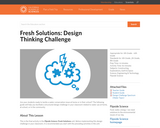
In this lesson, students will work collboratively to tackle a water conservation issue at home or in their school.

In this lesson, students will choose an article about a global human rights issue to read, learn more about and then reflect on. The lesson will allow students to take to heart the NCDPI Global Education goals of investigating the world, recognizing the perspectives of others in different parts of the world and communicating ideas through their reflection. Note: This lesson was created in accordance with the 7th Grade Social Studies Essential Standards and the VIF/Participate Global Competence Indicators for Grade 7. For more information about VIF/Participate and these indicators, please visit https://www.participate.com/. This lesson was developed by Lindsey Gallagher as part of their completion of the North Carolina Global Educator Digital Badge program. This lesson plan has been vetted at the local and state level for standards alignment, Global Education focus, and content accuracy.

This lesson plan specifically addresses the implications of a natural disaster and its effects on water quality and a community's health. Students will learn methods used during an emergency response to test and treat water that has been contaminated by pathogenic microorganisms. Water treatment options introduced can vary depending on the location and type of emergency involved, but have the same goal to reduce human illness and death. After completing this lesson, students will have an improved understanding of which organizations are involved in emergency response and why safe drinking water is a substantial heath concern after a natural disaster.

This video explores key water issues, the water cycle, and some of the technology and techniques used to conserve water. A set of discussion questions and post-viewing activities are provided.

In this lesson, students will read articles related to water shortages around the world and answer questions about them. The class will discuss the articles.

Students will be introduced to the Industrial Revolution's problem of child labor. Students will be able to describe advances in machinery during the Industrial Revolution. Students will identify reasons for the use of child laborers during the Industrial Revolution and describe how child laborers lived during the Industrial Revolution. Some of the YouTube links are dead, but the images are included in the pdf.

The Japanese Weather Patterns unit provides students opportunities to interpret and analyze trends in weather patterns over many years in both Japan and the United States. Students will compare the annual rainfall and average temperatures at different times of the year in both places. Students will also identify ways the Japanese culture and weather patterns are reflected in the artwork of Mount Fuji and will construct haikus reflective of Japanese culture and weather patterns as depicted in art.

In this lesson, students use maps to learn about the geographicac features and climate of Mali and consider what this can tell us about demographics and economics of the country.
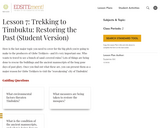
In this lesson, students learn about current issues in Timbuktu including environmental threats and restoration efforts.
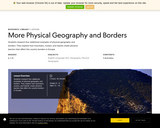
Students research four additional examples of physical geography and borders. They explore how mountains, oceans, and islands create physical barriers that affect the country borders in Europe.

This unit begins with a set of lessons designed to explain the evolution of armed conflict. As warfare adapted, humans left behind natural toxins and poisons and began creating synthetic chemical weapons. The culminating products include an environmental impact statement regarding one specific chemical agent and a global project recommendation designed to mitigate the effects of that agent.
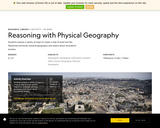
Students analyze a variety of maps to create a map of Israel and the Palestinian territories' physical geography, and reason about Jerusalem's location.
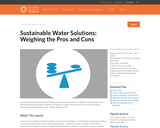
In this lesson, students will work together to map out the strengths and limitations of potential solutions to some important water use and conservation issues. This lesson is part of a larger unit whereby students practice different steps in design thinking within the context of issues surrounding our global water system. In this exercise, students will practice comparing potential solutions in order to prepare for the culminating activity of the unit: a design thinking challenge.
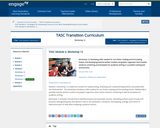
In this lesson, students will become familiar with analyzing events and ideas using primary and secondary sources. Tasks involve evaluating text for author’s point of view; determining central ideas, reviewing information for cause and effect relationships, as well as distinguishing fact from opinion using political cartoons.

In this lesson, students explore the First Industrial Revolution in early nineteenth-century America. Through simulation activities and the examination of primary historical materials, students learn how changes in the workplace and less expensive goods led to the transformation of American life.

This inquiry leads students through an investigation of water access in the Middle East using various sources that consider geographical, political and economic issues. By investigating the compelling question, students examine the geography of the region, including environmental and demographic relationships, the ecological impact of accessing water, and the subsequent political conflicts over control of natural resources.
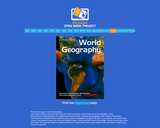
The 6th grade MI Open Book Geography Text explores the five themes of geography, first by providing an introduction to the study of geography itself, then focusing in on a theme each chapter while studying a region of the world. The final chapters explore the themes in action in other regions.